Hamiltonian Group Actions on Frame Spaces
/jmm20
This talk!
Take Home Message
Symplectic geometry is a powerful set of tools which is useful for the study of frames
Frames
A frame in \(\mathbb{C}^d\) is an ordered spanning set \(\{\phi_1,\dots ,\phi_N\}\), which we often represent as a short, fat matrix

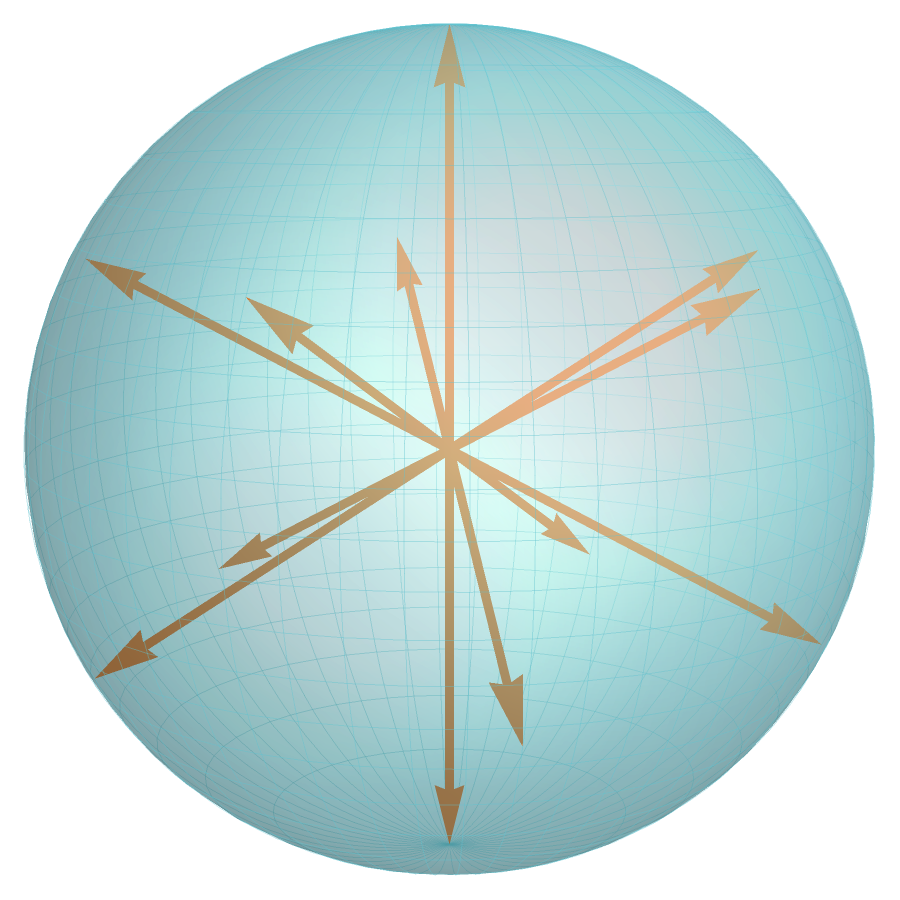
Symplectic Geometry
Definition. A symplectic manifold is a smooth manifold \(M\) together with a closed, non-degenerate 2-form \({\omega \in \Omega^2(M)}\).
Example: \((S^2,d\theta\wedge dz)\)
Example. \((\mathbb{R}^2,dx \wedge dy) = (\mathbb{C},\frac{i}{2}dz \wedge d\bar{z})\)
Example. \((S^2,\omega)\), where \(\omega_p(u,v) = (u \times v) \cdot p\)
Example. \((\mathbb{R}^2,\omega)\) where \(\omega(u,v) = \langle i u, v \rangle \)
Example. \((\mathbb{C}^n, \frac{i}{2} \sum dz_k \wedge d\overline{z}_k)\)
Example. \((\mathbb{C}^{d \times N}, \omega)\) with \(\omega(X_1,X_2) = -\operatorname{Im} \operatorname{trace}(X_1^* X_2)\).
Maps
If \(H: M \to \mathbb{R}\) is smooth, then there exists a unique vector field \(X_H\) so that \({dH = \iota_{X_H}\omega}\), i.e.,
(\(X_H\) is called the Hamiltonian vector field for \(H\), or sometimes the symplectic gradient of \(H\))
Example. \(H: (S^2, d\theta\wedge dz) \to \mathbb{R}\) given by \(H(\theta,z) = z\).
\(dH = dz = \iota_{\frac{\partial}{\partial \theta}}(d\theta\wedge dz)\), so \(X_H = \frac{\partial}{\partial \theta}\).

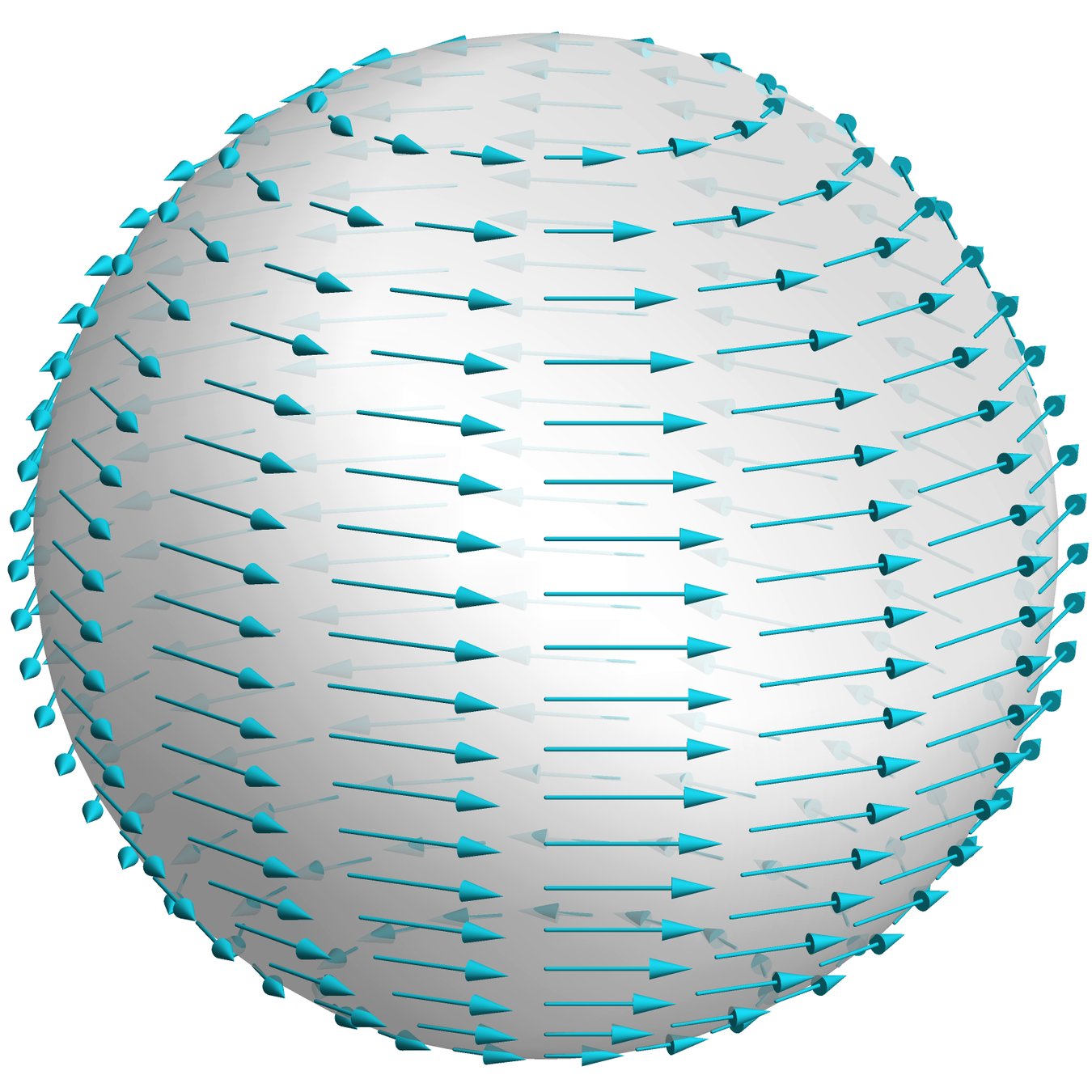
Lie Group Actions
Let \(G\) be a Lie group, and let \(\mathfrak{g}\) be its Lie algebra. If \(G\) acts on \((M,\omega)\), then each \(V \in \mathfrak{g}\) determines a vector field \(X_V\) on \(M\) by
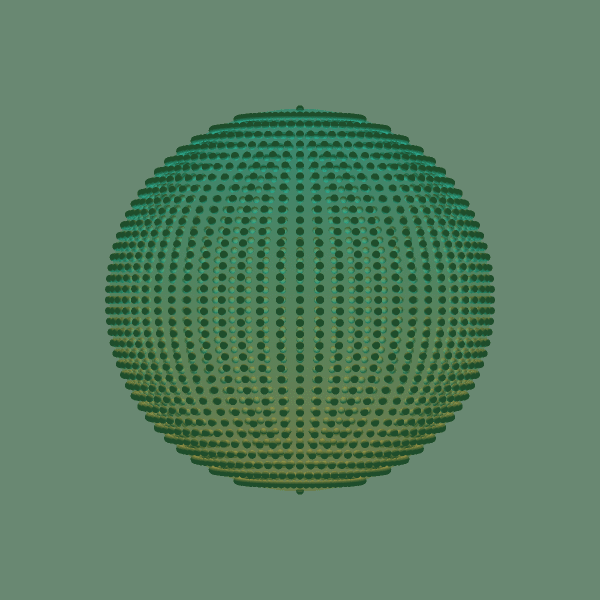
\(S^1=U(1)\) acts on \((S^2,d\theta \wedge dz)\) by
For \(r \in \mathbb{R} \simeq \mathfrak{u}(1)\), \(X_r = r \frac{\partial}{\partial \theta}\).
Momentum Maps
Definition. An action of \(U(1)\) on \((M,\omega)\) is Hamiltonian if there exists a map
so that \(d\mu = \iota_{X}\omega\), where \(X\) is the vector field generated by the circle action.

\(X = \frac{\partial}{\partial \theta}\)
\(\iota_X\omega = \iota_{\frac{\partial}{\partial \theta}} d\theta \wedge dz = dz \)
\(\mu(\theta,z) = z\)
Momentum Maps
Definition. An action of \(G\) on \((M,\omega)\) is Hamiltonian if each one-parameter subgroup action is Hamiltonian. Equivalently, there exists a map
so that \(\omega_p(X_V, X) = D_p \mu(X)(V)\) for each \(p \in M\), \(X \in T_pM\), and \(V \in \mathfrak{g}\).
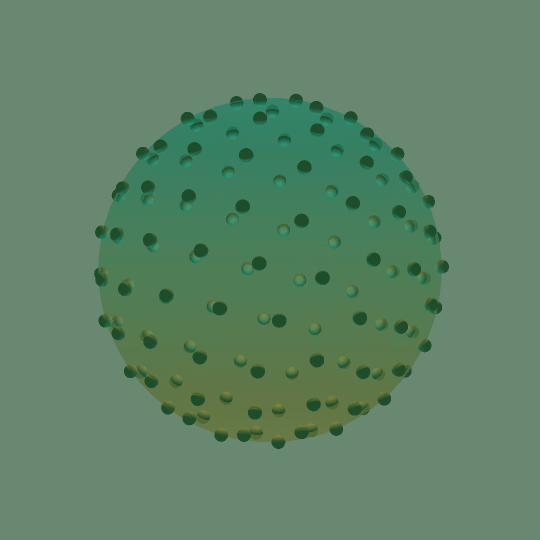
\(X_{V_{(a,b,c)}}(x,y,z) = (a,b,c) \times (x,y,z)\)
\((\iota_{X_{V_{(a,b,c)}}}\omega)_{(x,y,z)} = a dx + b dy + c dz \)
\(\mu(x,y,z)(V_{(a,b,c)}) = (x,y,z)\cdot(a,b,c)\)
Group Actions on Frames
What compact Lie groups act nicely on \(\mathbb{C}^{d \times N}\)?
- \(U(d)\) acts on the left
- \(U(N)\) acts on the right
- \(U(1)^d\) acts on the left
- \(U(1)^N\) acts on the right
Parseval frames
\(\mu_{U(d)}^{-1}(I_d)\)
unit-norm frames
\(\mu_{U(1)^N}^{-1}\left(-\frac{1}{2},\dots , -\frac{1}{2}\right)\)
FUNTFs
The (finite) unit-norm tight frames (FUNTFs) are the level set
Let \(\mu\) be the momentum map of the product group
The Generalized Frame Homotopy Conjecture
Theorem [Cahill–Mixon–Strawn ’17]
The space of length-\(N\) FUNTFs in \(\mathbb{C}^d\) is path-connected for all \(N \geq d\geq 1\).
is either empty or path-connected.
and
Theorem [with Needham]
For any invertible, Hermitian matrix \(S\) and any \(r_1, \dots , r_N \geq 0\), the space of frames \(\Phi = [\phi_1 | \cdots | \phi_N]\) with
Eigensteps
Example for FUNTFs with \(N=6, d=3\):
The eigensteps of a frame \(\Phi = [\phi_1 | \dots | \phi_N]\) are the eigenvalues \(\lambda_{ij}\) of the partial frame operators
Must satisfy \(\ldots \geq \lambda_{i,j} \geq \lambda_{i-1,j} \geq \lambda_{i,j+1} \geq \dots\)
Proposition [with Needham; cf. Flaschka–Millson]
The eigensteps of a FUNTF are coordinates of the moment map associated to a maximal torus action on (an open, dense subset of a quotient of) FUNTF space.
Corollary [using Duistermaat–Heckman]
The eigensteps of uniform random FUNTFs are distributed according to Lebesgue measure on the eigenstep polytope.
Some Results
Proposition [with Needham; cf. Flaschka–Millson]
The eigensteps of a FUNTF are coordinates of the moment map associated to a maximal torus action on FUNTF space.
Consequences
Bounds: The fraction of FUNTFs satisfying any condition is no bigger than the fraction of possible eigensteps compatible with the condition.
Sampling:
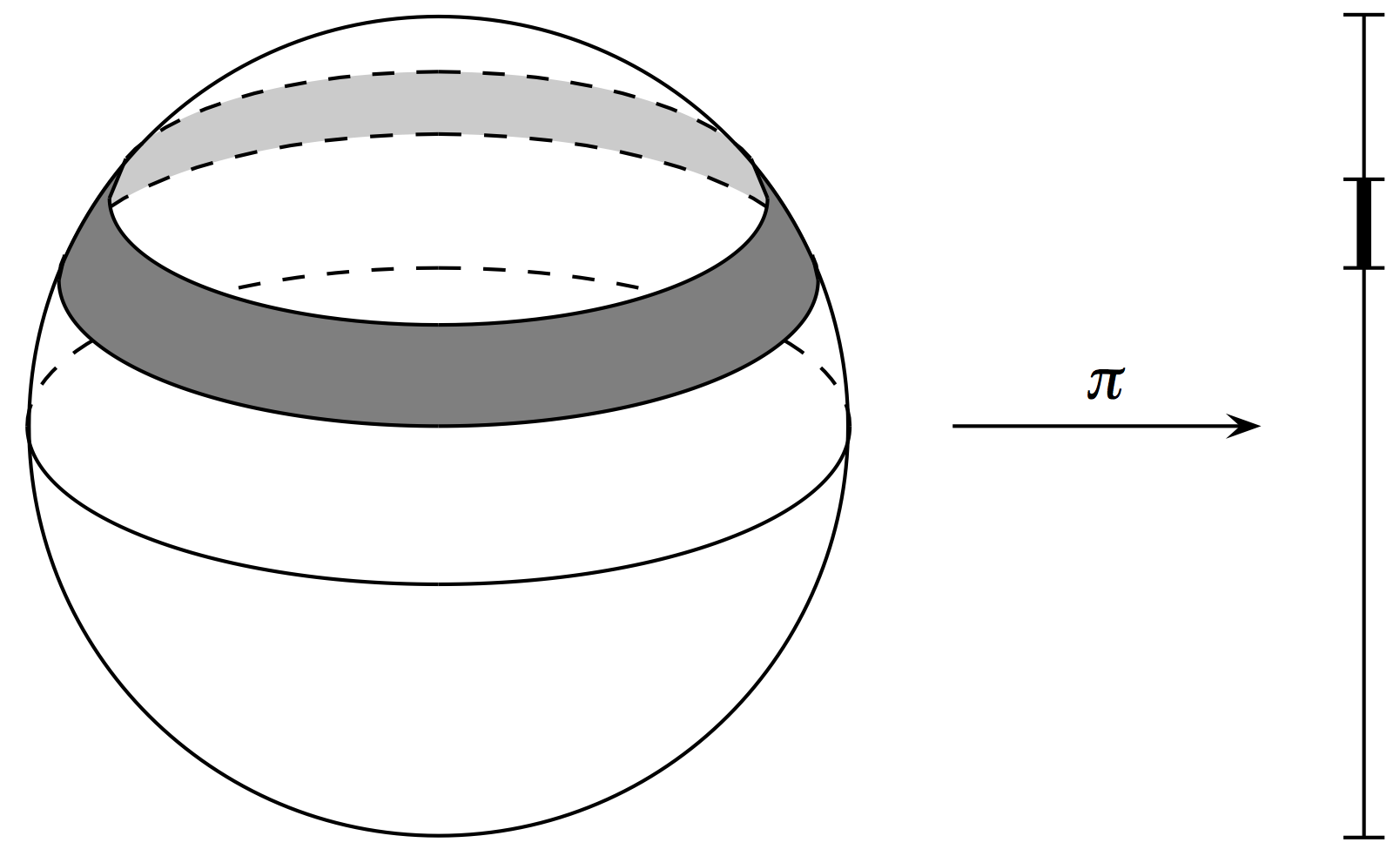
Cylindrical coordinates \((\theta,z)\) are uniform on the sphere.
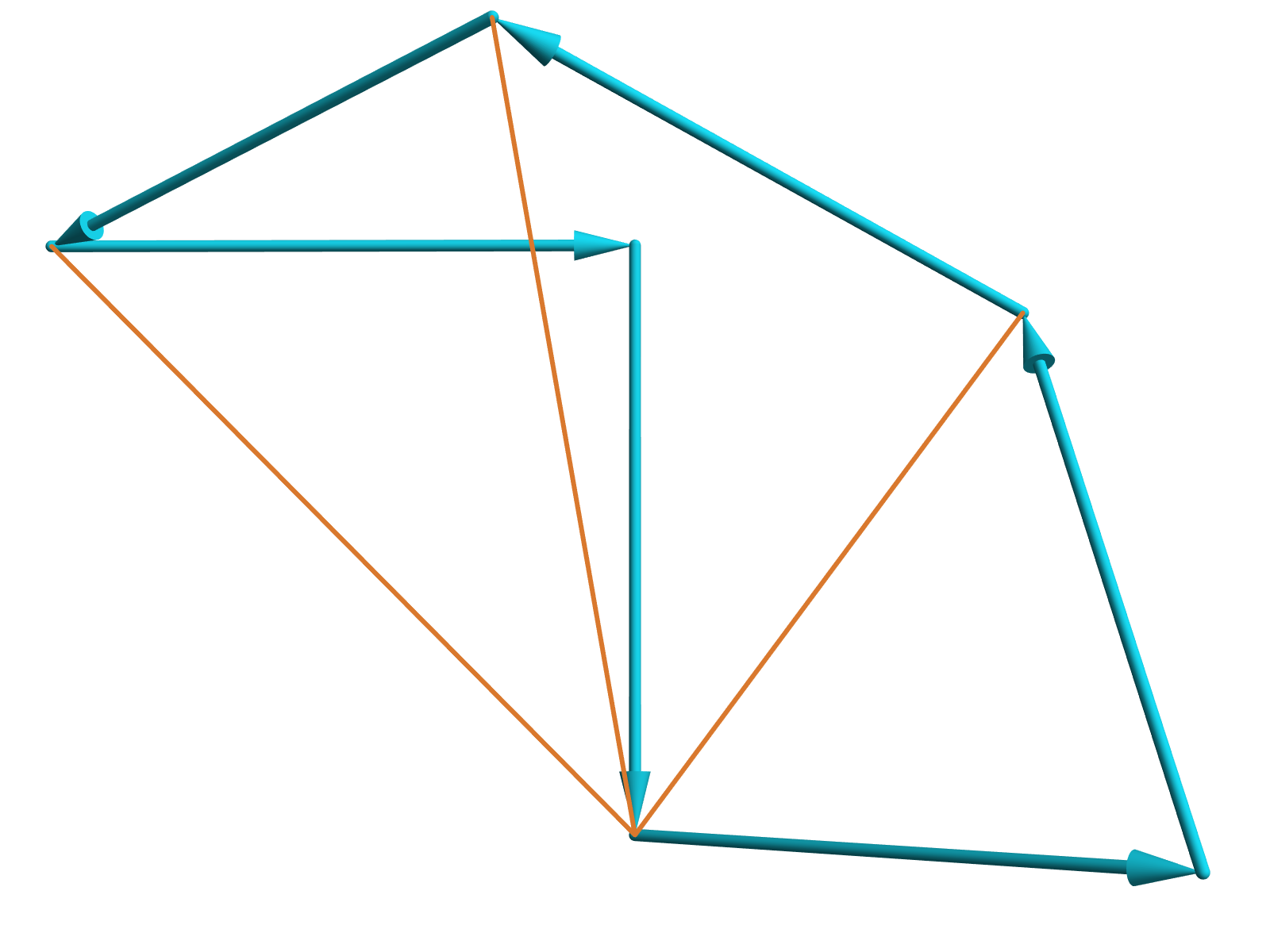
Geometry in traceless Hermitian matrices
\(\phi_1 \phi_1^* - \frac{1}{d}I_d\)
\(\phi_2 \phi_2^* - \frac{1}{d}I_d\)
\(\phi_3 \phi_3^* - \frac{1}{d}I_d\)
\(\phi_4 \phi_4^* - \frac{1}{d}I_d\)
\(\phi_5 \phi_5^* - \frac{1}{d}I_d\)
\(\phi_6 \phi_6^* - \frac{1}{d}I_d\)
\(\lambda_{21}\)
\(\lambda_{31}\)
\(\lambda_{41}\)
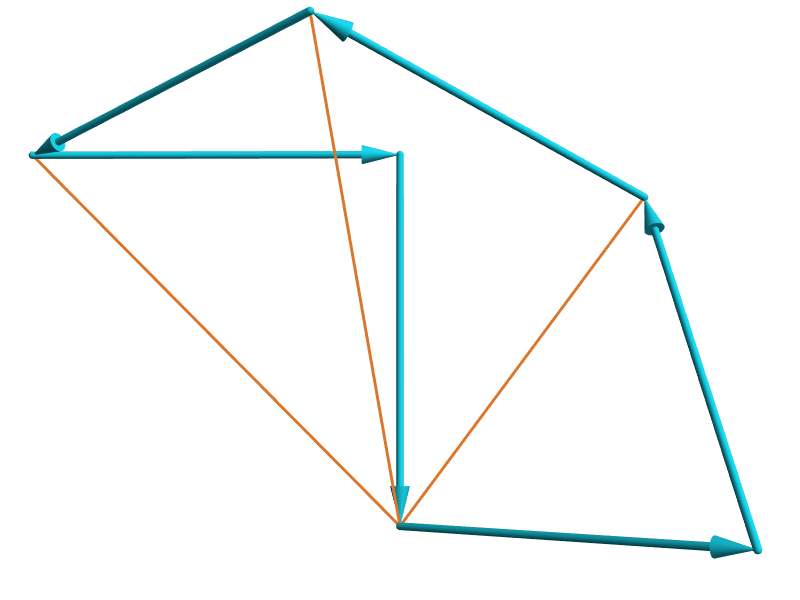
Sampling algorithm: \(((\lambda_{ij})_{i,j},(\theta_{ij})_{i,j}) \mapsto \Phi\)
Thank you!
Funding: Simons Foundation
References
Symplectic geometry and connectivity of space of frames
Tom Needham and Clayton Shonkwiler
The geometry of constrained random walks and an application to frame theory
Clayton Shonkwiler
2018 IEEE Statistical Signal Processing Workshop (SSP), 343–347